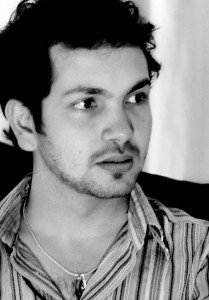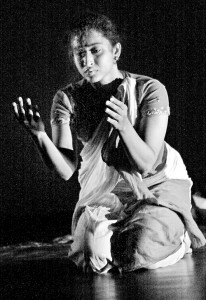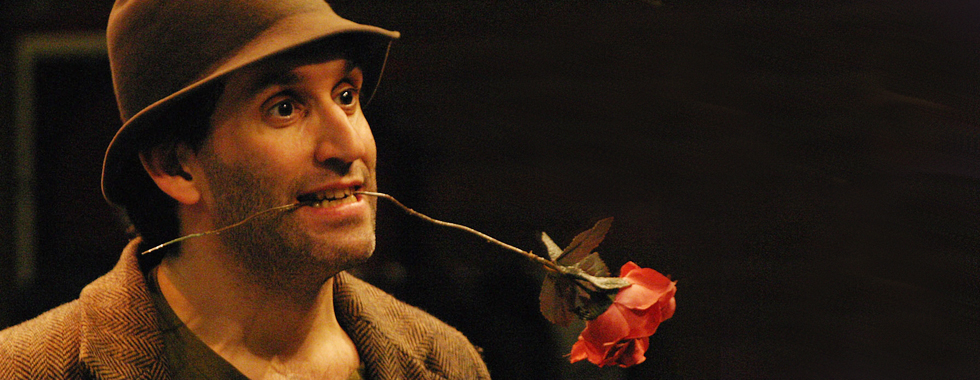It’s a performance!
A girl goes into a public square, stands in the midst of the thronging crowd and takes a pair of scissors to her hair. Astonished, passers-by will stop; some will stare, some will question, some will laugh and some will avert their eyes and rush past. In a while she leaves, taking her shorn hair with her. Is it performance art? A visitor to the park who arrives ten minutes later may never know what had just transpired-so did it really happen from their perspective? That’s a question amongst many this year’s Colombo Art Biennale will tackle when it presents the Live Art programme, curated by Ruhanie Perera.

Jake Oorloff: Broadening the view of art
Live Art has long been a hotly contested medium in the arts. It’s difficult to pin the term down to what it is, being as broadly applicable and subject to individual perception as it is. The term is generally defined as a performance taken on by an artist or a group of artists as a work of art. Art is ‘made’ directly in front of a live audience at a certain time and space-it’s literally a direct confrontation between the creator and the viewer.
“It is art that is bound by space and time,” says Jake Oorloff, who will open the segment at the Biennale. Live art, once made, can never be recreated or reprised. It is literally in the moment, ‘live’ within those few seconds, minutes or hours and lost after that. Here the art engages directly with its audience, feeding from and responding to their reactions. For Jake, a theatre practitioner based in Colombo, live art is a fleeting moment, a shared experience among strangers made all the more precious by its sheer expressiveness.
The term ‘live art’ came into usage in Britain in the 80s, when artists who found themselves reaching beyond the constraints of traditional visual or performance based practices began to experiment within theatres and galleries, eventually spilling out into the streets. In Sri Lanka it is not yet a widely practised medium; something CAB curator Ruhanie Perera hopes to change with this inclusion in the CAB programme. The Biennale is no stranger to the art form, having had two performance artists included in the programme last year. But this is the first time seven different artists from Sri Lanka and abroad will present a separately curated segment dedicated to the practice. “I want it to inspire a discussion about the parameters of performance art eventually,” says the curator. “To see how we can expand the idea to include artists from different backgrounds.”
The CAB Live Art programme is certainly versatile. Apart from Jake, six other artists will use time and space to their advantage, broadening the horizons of traditional and even contemporary art to include varied expression. Writer Kumari Kumaragamage will

Dancing to a different beat: Venuri Perera
challenge the linear form of narrative when discussing her work in a gallery space while Priyanthi Anusha and Venuri Perera will collaborate for the first time for work that considers a history of the gendered body. Movement artists Thomas Pritchard and Eva Priyanka Wegener will present something a little more improvisational with their movement pieces. Adrian Schvarztein practises the discipline of clowning, which he hopes to take out into the streets and daily lives of Colombo.
For Jake, this year’s CAB theme is very relevant. He’s in the midst of making history himself, currently being in the process of narrating the untold-or really, “narratives that don’t quite make it,” as he puts it. Jake’s work has consistently been on the other end of the spectrum as art that is ‘activist’, although he’d rather prefer you didn’t use that term on him. In 2011 Jake (together with Tracy Holsinger) was awarded the Sunethra Bandaranaike Trust Grant for New Theatre-Making Projects to create a work for theatre under the theme of ‘Reconciliation’. The grant birthed ‘My Other History’, personal narratives that toured Colombo, Galle, Kandy and Jaffna in search of a receptive audience and found it. “When I heard about the Biennale’s theme I instantly knew it was very current, especially for me,” he explains. “As artists Ruhanie and I (the duo are cofounders of the Floating Space Theatre Company) have always responded to the here and now.”
It is for this very reason that he has chosen to respond to the work of South Indian artist T.V. Santhosh as his opening live art act. “Like many of his politically motivated contemporaries, Santhosh lifts pivotal episodes from recent history and renegotiates their appearance with a shock-bulb of violent energy that eclipses the work,” says the Saatchi Galleries website of the artist’s work. Jake finds Santhosh’s work rather resonant of his own- “he works with the idea of power and powerlessness”- and will respond with thought and reflection to the artist’s sculpture; titled Effigies of Turbulent Yesterdays.
Jake Oorloff will open the Colombo Art Biennale’s Live Art programme at 7 p.m. on January 31 at the Park Street Mews. The Live Art Programme will be followed by a post-mortem of sorts, with a conversation at the German Cultural Institut on February
6 at 6 p.m.

Send in the clowns: Adrian Schvarztein


